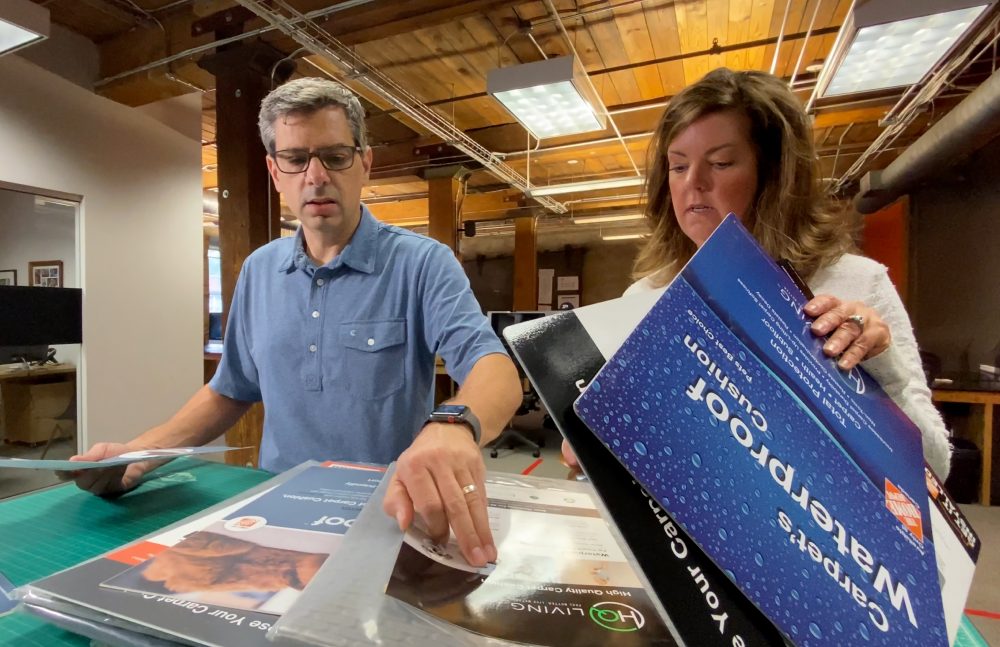
If you follow our insights, you know that this article follows similarly themed content on research, personas and marketing strategy. Assuming you have done your research and adopted a collaborative strategy, you are ready to move into creative. Unfortunately, this doesn’t mean you get to check off deliverables just yet. There’s a critical step you’ll need to consider first, and it’s called implementation.
Implementation is the creative concepting stage that precedes production. Concepting is often confused with execution. But, in fact, they are not the same thing.
Suppose you own a bakery, and you’ve decided to start selling chocolate chip cookies. You can’t just roll in one morning and start baking. At least not without first working out a few kinks. You need to identify the right recipe, one that yields the right texture, size, chocolate chip ratio and flavor. You’re not reinventing the cookie. Rather, you are exploring recipes to determine which one you like, suits your budget and will be the most successful. This is implementation.
Execution, on the other hand, is taking that working recipe and baking it. You’re out of the lab and in the consumer environment, the bakery. You’re no longer exploring, experimenting or sourcing ingredients. You are producing cookies. Assuming you’ve hired a skilled baker, they can now follow the directions, use the right ingredients, and bake that “just right” cookie with no surprises or variation.
What is Creative Implementation?
In the home improvement world, the above cookie can be substituted with any deliverable, from a video to a billboard. Often, our engagements start with the statement, “We need this deliverable by this date.” The problem with this opening is that it assumes that creative solutions are formulaic, that specifications and deadlines can be plugged in, and solutions pop out. But that’s not the case.
Think of creative implementation as visually concepting your overall strategy. Rather than work through deliverables one at a time, you work to explore two to three creative directions that encompass multiple elements. That may include experimenting with how your strategy plays out in static and motion graphics, on social media and ecommerce, on landing pages and in emails. What does it sound like in an SMS ad? How does it translate to visual merchandising or influencer materials? If you answer these questions one at a time, your audience will see the cracks in your creative.
You may only need a social media ad or an ecommerce infographic this week, but that one touch point is part of a larger ecosystem. Creative implementation allows you to see it all together, to illustrate how one graphic informs your larger brand experience. Because, let’s face it, people don’t visualize uniformly. Creative concepting gives you a chance to see further into the future and make adjustments now that pay off in the long run.
Implementation in Action
Here’s an example of implementation in action. When a client asked Porchlight to develop a recruitment campaign, we delivered a comprehensive plan that included research, strategy, creative, execution and reporting. During the creative stage, we explored a variety of branded options for emails, social media, landing pages and print materials. We presented three different directions, each with its own approach to messaging, layout and personality. Each was mocked up to demonstrate how it would all come together. Once the client chose a path, execution was simple. We’d already worked through the kinks, making creative decisions in a holistic format.
In contrast, clients who rush to production often find that their collateral isn’t as cohesive. Decisions are harder to make because they are made under pressure and in a vacuum. Creative direction becomes a moving target as strategic decisions get worked out deliverable by deliverable. Ultimately, this results in excessive revisions that risk compromising both budget and schedule.
Implementation in the Real World
In an ideal world, all of our clients would make time for implementation, and their merchants would make reasonable requests. But that’s not always how it works. Sometimes, despite their best efforts, our clients find themselves in production mode with no time to turn back. What then?
- First, seek an experienced agency to work with. They will ask more questions up front, but the work will be better for it.
- Second, if you can, allow for some exploration time in your project scope.
- Third, put your cards on the table. That includes work by other creatives. If you are working with multiple agencies, build bridges not silos.
- Lastly, don’t panic. It’s not catastrophic. Do consider how the next time can be different.